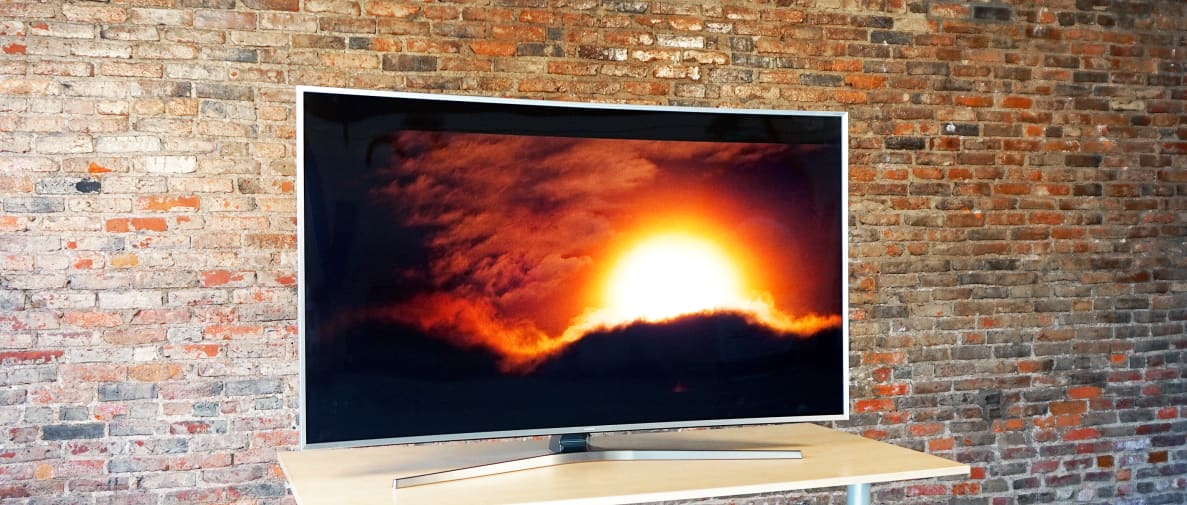
We’ve said it before and we’ll say it again: we’re absolutely smitten with Samsung’s black frame insertion (BFI) mode – labelled in the “ Custom” submenu – which boosted motion sharpness to a level hitherto unseen on LCD-based displays, so much so that we incorporated it into our calibration workflow for the UE65JS9000. It worked well in our testing, so we’d leave it on. Like last year’s Samsung HU8500, the JS9000 ships with a option in the picture menu to darken the top and bottom letterbox bars in cinemascope movies. In the end, we went with “ Low“, but would be equally happy with “ Standard” or “ High“. In practice, we didn’t detect a great deal of difference between these 3 settings when we sampled a variety of real-life content (particularly low-light material): all deepened blacks to the same degree without introducing blatant fluctuation in luminance or crushing shadow detail.

All three lowered measured black level to 0.002 cd/m 2 on a full-black screen with auto-dimming defeated, and 0.043 cd/m 2 on 4×4 ANSI. Three settings are available apart from “ Off“, namely “ Low“, “ Standard” and “ High“. Unsurprisingly, native black level was eerily similar once peak white was aligned to our dark-room target of 120 cd/m 2, coming in at 0.052 cd/m 2 on both full-field video black (with auto-dimming defeated by displaying a pause icon from our OPPO Blu-ray player) and a 4×4 ANSI chequerboard pattern if was disabled.Įngaging activates the 65JS9000’s pseudo-local dimming system, which not only improved black depth, but also attenuated the initially observed backlight inconsistencies (several patches of clouding near the corners) to negligible levels. Judging from its subpixel structure, the Samsung UE65JS9000 uses the same PVA LCD panel as the flagship UE65JS9500. Picture Quality Black Level & Contrast Performance Yes for both 1920×1080 and Consumption Default mode No judder in 2D forced interpolation in 3D Passed 2:2 PAL & 3:2 NTSC tests in SD & HDġ080 lines or higher with engaged Post-calibration Colour Checker Classic errors (<3 not appreciable to the eye) Post-calibration Colour Checker Classic test Post-calibration colour errors (<3 not appreciable to the eye) Post-calibration colour saturation tracking Post-calibration RGB tracking and dEs in mode Pre-calibration RGB tracking and delta errors (dEs) As was the case on the UE65JS9500, red tended towards oversaturation, but a quick 24-point colour checker test revealed no glaring inaccuracy to the human eye in real-world viewing. Equipments used consisted of a Klein K10-A meter profiled to a JETI Specbos 1211 spectroradiometer, and a DVDO AVLab TPG signal generator, all controlled via SpectraCal’s CalMAN video calibration software.Īchieving D65 greyscale, 2.4 gamma and Rec.709 colour was smooth sailing on the Samsung UE-65JS9000, thanks to well-implemented calibration controls that work as they should. We calibrated our Samsung UE65JS9000TXXU review sample in mode, the display’s most accurate out-of-the-box picture preset.
BEST 3D GLASSES FOR SAMSUNG JS9500 TV
Otherwise, the JS9000’s user menu, One Connect box, remote controls and Smart TV features are identical to those found on its step-up sibling, so please refer to our 65JS9500 review if you need more details or a refresher.


Note: The styling of the Samsung UE65JS9000 is extremely similar to the UE65JS9500, what with its brushed metallic silver bezel (although sans chamfer detailing), curved screen and Y-shaped stand. Three screen sizes are planned for the UK and other European countries, namely the 48in UE48JS9000, 55in UE55JS9000, and the 65-incher which is the subject of today’s review. Carrying the South Korean manufacturer’s “SUHD” designation, the UE65JS9000 features 3840×2160 screen resolution, Samsung’s proprietary quantum dot technology (branded “Nano Crystal Colour”), native 10-bit LCD panel, octa-core processor, high dynamic range (HDR) support, four HDMI 2.0 inputs, HDCP 2.2 compatibility, a curved design, as well as the company’s new Tizen-based Smart TV platform.Ĭompared with the top-end JS9500 series, the Samsung JS9000 loses the pop-up camera and, perhaps more importantly for video enthusiasts, direct LED backlighting with full-array local dimming (FALD) instead the 65JS9000 uses edge-lit LED with pseudo-local dimming. Hot on the heels of our review of Samsung’s 2015 flagship JS9500 ultra high-definition (UHD) TV, today we’re looking at the 65-inch version of the step-down JS9000 series.


 0 kommentar(er)
0 kommentar(er)
